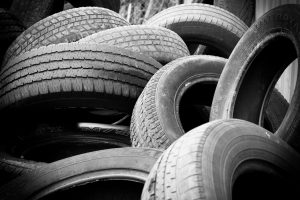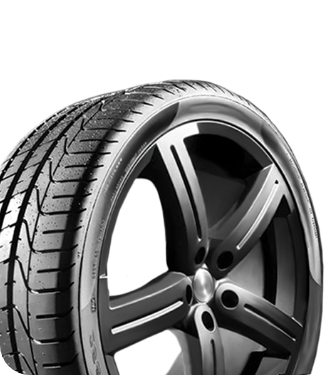

How To Identify and Fix Common Tire Issues
Tires |Tires are the unsung heroes of our vehicles. They carry us through all kinds of weather, over various terrains, and at high speeds. And yet, they often don’t get the attention they deserve until something goes wrong.
Knowing how to identify and fix common tire issues is a worthwhile skill for all drivers to ensure their safety and their vehicle’s performance and efficiency. Below, we’ll break down some typical tire problems many drivers experience at one time or another and the best DIY solutions.
Typical Tire Issues and What You Can Do
Punctures and Flats
Perhaps the most common tire issue that every driver will experience at some point is a punctured or flat tire. Whether caused by a nail on the road or a sharp piece of debris, punctures can happen anytime. The first step in fixing a flat tire is to locate the puncture.
If the object is still embedded, you might hear a hissing sound or see bubbles forming around it if you spray soapy water. Once you locate it, you can use a tire repair kit to plug the hole if it’s a small puncture. For larger punctures or sidewall damage, it’s best to replace the tire entirely.

Uneven or Excessive Tire Wear
Every tire eventually wears down over time, but it becomes a problem if the degradation is uneven or excessive for certain tires. If the tire wears down in such a way, it is can be safe and in fact is more likely to blow out. Causes for uneven and excessive tire wear include improper wheel alignment, unbalanced tires, or driving habits such as hard braking.
To fix uneven tire wear, start by checking the tire pressure and inflating it to the recommended levels. Next, inspect the wheel alignment and balance. If you’re unsure about these adjustments, a professional mechanic can help. Regularly rotating your tires every 5,000 to 7,500 miles can also prevent uneven wear.
Cracking or Dry Rot
Tires must be flexible and compliant to grip the road correctly and maintain their structural integrity. Cracked tires or tires with dry rot compromise the rubber and make it more susceptible to blowouts and punctures. Excessive exposure to environmental conditions, like prolonged sunlight and extreme heat, can cause a tire to dry out or crack.
To fix this issue, drivers must inspect their tires regularly for any signs of cracking. If you notice small cracks, applying a tire protectant can help slow down the deterioration. However, if the cracks are deep or extensive, it’s best to replace the tires to ensure your safety on the road.
Sidewall Bulges and Blisters
Another common issue for tires is sidewall bulges and blisters. Identifying and fixing these problems immediately is important because they significantly degrade the integrity of the rubber and put the tire, your vehicle, and yourself at risk.
Typically, impact damage causes bulges and blisters in the tire sidewall, such as hitting a pothole or curb. If you notice a bulge or blister on your tire, replace it immediately. Always inspect your tires after hitting a curb or pothole to catch any damage early.
Vibration and Shaking
If you notice that your vehicle is vibrating and shaking more than usual while driving, it could be due to the tires. Common causes for this shaking include unbalanced tires, misaligned wheels, or damaged suspension components.
To diagnose and fix this issue, start by checking if the tires are properly balanced. If they are, inspect the wheel alignment and suspension system. Addressing these issues promptly will not only improve your vehicle’s comfort but also prevent further damage to your tires and other components.
When To Seek Professional Help
While you can resolve many tire issues yourself, there are times when professional help is necessary. If you notice any of the following signs, it’s best to consult a mechanic:
- Persistent vibration or shaking despite balancing and aligning the tires
- Deep cracks or significant dry rot that tire protectant cannot treat
- Large punctures or sidewall damage a tire repair kit cannot fix
- Frequent loss of tire pressure without any visible punctures or leaks
A professional mechanic has the expertise and tools to diagnose and fix complex tire issues, ensuring your safety on the road.

Preventative Measures for Tire Longevity
The best way to ensure your tires don’t succumb to these problems is with proactive maintenance. Read on to learn some practices to extend the life of your tires.
Regular Inspections
Make it a habit to inspect your tires at least once a month to ensure optimal safety and performance. During your inspection, take the time to examine the tread depth, as insufficient tread can lead to reduced traction on wet or slippery surfaces.
Look for signs of wear, punctures, or visible damage, such as cuts and bulges. Make sure to check the tire pressure, as both over-inflated and under-inflated tires can impact handling and fuel efficiency.
Proper Inflation
Always maintain the recommended tire pressure levels, as this is crucial for optimal vehicle performance. Underinflated tires can increase rolling resistance, leading to uneven wear and reduced fuel efficiency, while over-inflated tires can result in a harsher ride and decreased traction.
To ensure safety and efficiency, check your tire pressure at least once a month and before long trips. Use a reliable tire pressure gauge to measure the levels accurately and adjust as needed.
Rotation and Alignment
To ensure even wear on your tires and extend their life span, rotate them according to your vehicle’s specifications and driving conditions. Regular rotation helps distribute the wear more evenly across all tires, which improves traction and provides a smoother ride.
Additionally, periodically check your wheel alignment, as misalignment can cause tires to wear unevenly and negatively impact your vehicle’s handling. Taking these steps will help you maintain a well-performing car and ensure a safer driving experience.
Avoid Harsh Driving
Aggressive driving behaviors, such as hard braking, rapid acceleration, and sharp turns, can significantly accelerate tire wear and compromise your vehicle’s safety. To ensure your tires last longer and maintain optimal performance, practice smooth and controlled driving techniques.
Gradually accelerate and decelerate and take turns gently to minimize friction and heat buildup. By adopting a more mindful approach to your driving, you can extend the life of your tires.
Protect From Harsh Conditions
Whenever possible, it’s best to park your vehicle in a garage or a shaded area. This practice not only protects your tires from extreme heat and sunlight but also helps extend their life span. Prolonged exposure to harsh UV rays can cause tires to degrade, leading to cracking and dry rot.
To further safeguard your tires, consider applying a tire protectant. These products create a protective barrier that helps maintain the rubber’s flexibility and moisture, providing an extra layer of defense against the elements and ensuring safer driving conditions.
Keep Your Tires Fresh With RNR Tire Express!
Maintaining your tires is crucial for safety and optimal vehicle performance, as it helps extend their life span and prevents costly repairs. If you ever need help with your tire maintenance, whether that’s an alignment, rotation, or tire products like sealant repair kits, RNR Tire Express can help!
We’ll help you find tires in Laredo and our other many locations nationwide and provide you with the services and products to keep them running better for longer. Browse our store online or schedule an appointment with one of our tire experts today!





